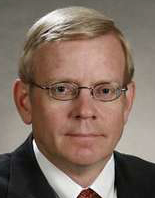Torrey: Tort Reform to Emphasize More Timely Compensation of Victims
Monday, August 2, 2021 | 0
In a new article, a scholar advocates for modification of tort law so that the negligence-action goal of providing compensation to tort victims can be better realized.

David B. Torrey
Christopher J. Robinette, who teaches at Widener University Commonwealth Law School, acknowledges that other goals of tort actions are the societal desire for accident prevention (that is, the safety goal); and vindication and basic justice for the victims of torts.
Still, the author argues, “the majority of tort victims actually are motivated simply by compensation,” to wit, the simple need for “money to pay medical bills and replace lost wages.”
In the author’s view, the current structure of tort law, in virtually all areas, does not allow a quick remedy for this basic need. In this regard, the complexity of tort law and its overwhelming uncertainty lead to delay and wasteful transaction costs (attorneys' fees and expenses), which impair the compensatory goal that underlies most tort victims’ desire to sue.
The author desires to “harmonize wrongs and compensation.” In the end, he sets forth no explicit new plan but instead asserts that mechanisms should be established to remove compensation-oriented cases from “wrongs-based tort law.” He argues that some mechanism of this sort would benefit both the plaintiffs and defendants in those compensation-oriented cases, as well as reserve the tort system for those interested in righting wrongs.
The author finds support for such a mechanism in the workers’ compensation reforms that unfolded at the beginning of the last century. He also finds support in the reforms that surrounded the burgeoning automobile accidents (the no-fault experiments that came in their early 20th-century wake) and the widely-publicized funds that have been established in the aftermath of mass disasters. These include the September 11th Victim Compensation Fund, the BP Oil Spill Fund/Gulf Coast Claims Facility and the GM Ignition Switch Fund.
This new article is valuable in providing quick, accessible sketches of all of these programs, reminding the reader of their genesis and how they have worked in practice. The author observes that workers’ compensation has been the most pervasive and successful reform of tort law to bring compensation to a limited class of injury victims. (His brief history of the emergence of our field will be of interest to all.)
Compensation for victims of automobile accidents, on the other hand, has experienced a rockier reform path. Yet, many jurisdictions still have some level of auto no-fault, with a policy of seeking to compensate victims on some sort of no-fault basis and preventing most cases from ever making it to a jury trial.
The mass-disaster funds, meanwhile, were quickly enacted with a goal of compensation and preventing, wherever possible, the delay and waste of litigation.
Of course, most mechanisms that focus on compensation, with their streamlined remedies, restrict the ability of the parties to receive an “individualized justice ruling.”
Still, the author insists, “most of tort law is not properly designed to meet the compensatory goals of a large number of claimants. What is needed is a way to bypass tort law in cases better suited for compensation, while leaving wrongs-adjudication in place as the default. ... Designing such a bypass is challenging, but worth the effort. If successful, it would incorporate compensation into wrongs-based tort law. ... Additionally, the search for a way to fairly compensate those claimants who are not seeking vindication may create common ground on tort reform. A simpler, cheaper procedure with decreased pain and suffering damages would be fairer than some current reforms, like caps on damages, yet potentially generate the savings desired by business interests.”
David B. Torrey is adjunct professor of law at the University of Pittsburgh School of Law and a workers’ compensation judge with the Pennsylvania Department of Labor & Industry. This entry is republished from the Workers' Compensation Law Professors blog, with permission.







Comments